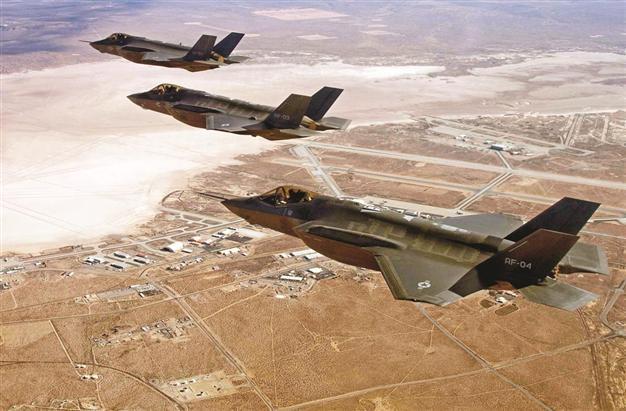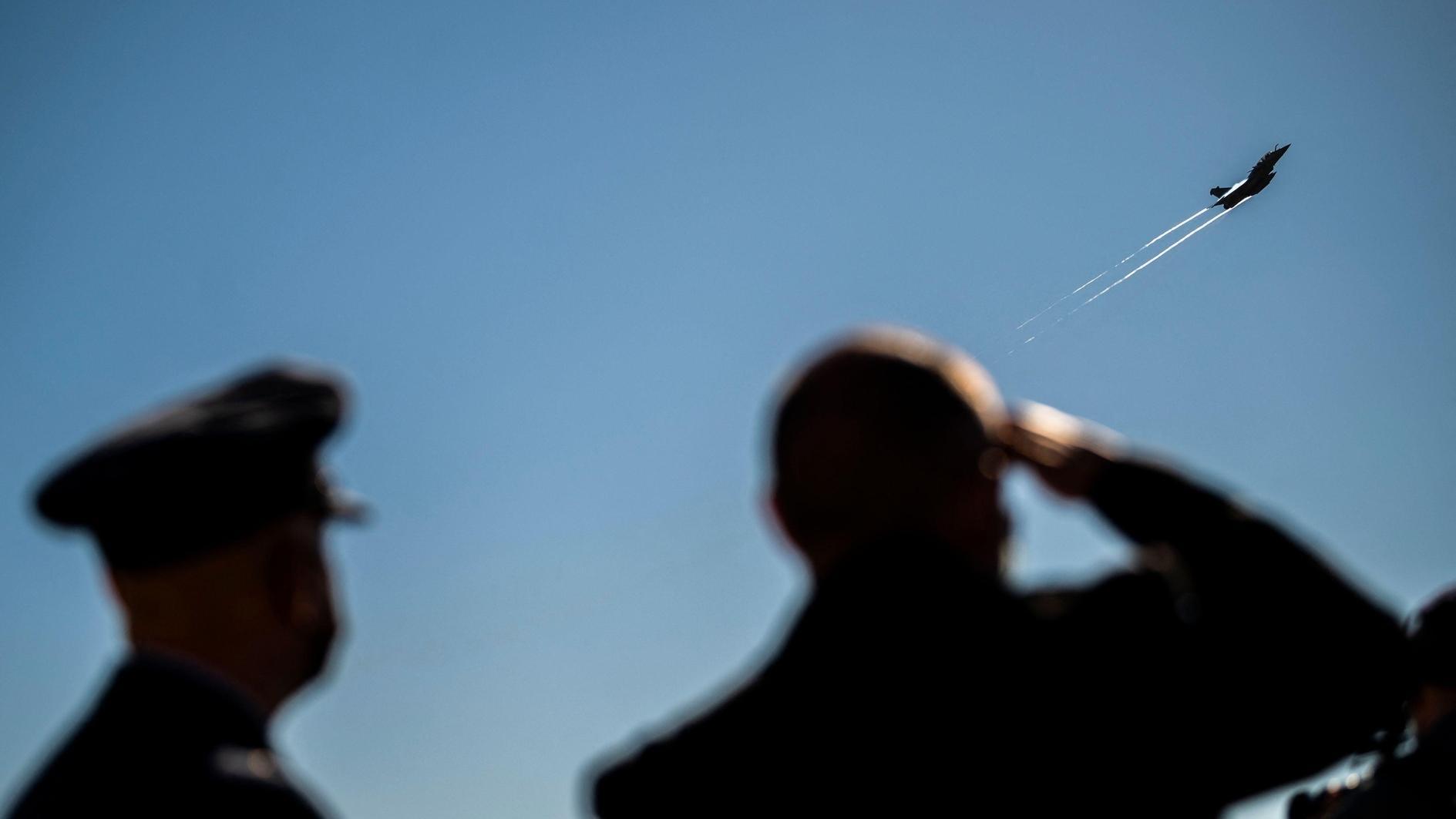Turkey’s $50 billion jet program in question
Burak BEKDİL

Three F-35 Joint Strike Fighters (rear to front) AF-2, AF-3 and AF-4, can be seen flying. In additon to 200 fighter jets it eyes to build, Turkey plans to buy 100 F-35s, which are open to possible US influence. REUTERS photo
When Ankara plans to build its own weapon systems or just buy them off-the-shelf, it plans big and no one seems to be worried. But the Turkish ambitions to build a “made-in-Turkey” fighter aircraft and buy scores of the new generation, multinational combat jet F-35 may go beyond Turkey’s financing capacity.Defense industry officials estimate that building eight prototypes for what will become the Turkish national fighter would cost Ankara over $10 billion. “Any figure in the range of $11 billion to $13 billion would be realistic,” a senior official familiar with the program said.
His guess for the final Turkish order if the entire program succeeded was nearly 200 aircraft. “We target $100 million per aircraft,” he said. “I think 200 is a realistic figure given our aging fleet of aircraft that will phase out in the decades ahead.”
That means Turkey will have to spend $31 billion to $33 billion for the Turkish fighter it hopes to design, develop and manufacture. But independent analysts say this may be an over-optimistic calculation.
“We know that Turkey’s plans do not include developing an engine for the Turkish fighter. Moreover, I think, $100 million per aircraft is too optimistic given Turkey’s technological constraints, its high-cost industry and the fact that a newcomer [to the fighter industry] like Turkey will always suffer setbacks and trials and errors during the entire process.”
Turkey has been in talks with Sweden’s Saab for pre-conceptual design work for the country’s first national fighter jet. Saab is the maker of the JAS 39 Gripen, a lightweight single-engine multirole fighter. It was designed to replace the Saab 35 Draken and 37 Viggen in the Swedish Air Force (Flygvapnet). The Gripen is powered by the Volvo-Flygmotor RM12 engine, a derivative of the General Electric F404, and has a top speed of Mach 2.
100 more from US
Turkey hopes that under its fighter jet program, dubbed the TF-X, it can fly the Turkish fighter by 2023, the centennial of the republic. Turkey’s aerospace powerhouse, TAI, has been working on three different designs, and Prime Minister Recep Tayyip Erdoğan is expected to decide on whether to go ahead with the plan at a defense industry committee meeting later this year.
Meanwhile, Turkey, whose present fighter fleet is made up of U.S.-made aircraft, also plans to buy the F-35 Joint Strike Fighter, a next-generation, multinational program also led by the United States.
Most of Turkey’s fleet of F-16 fighters, being modernized by Lockheed Martin, and the planned future F-35s are open to U.S. technological influence. Only its older F-4 aircraft, modernized by Israel, and its oldest F-16s, being modernized by Turkey itself, are free from this influence. But these older aircraft are expected to be decommissioned around 2020.
Turkey’s defense procurement officials have said Ankara intends to buy around 100 F-35s. Defense analysts estimate the cost of the entire JSF program to Turkey to be around $16 billion, bringing Turkey’s fighter budget up to $50 billion together with the TF-X.
















